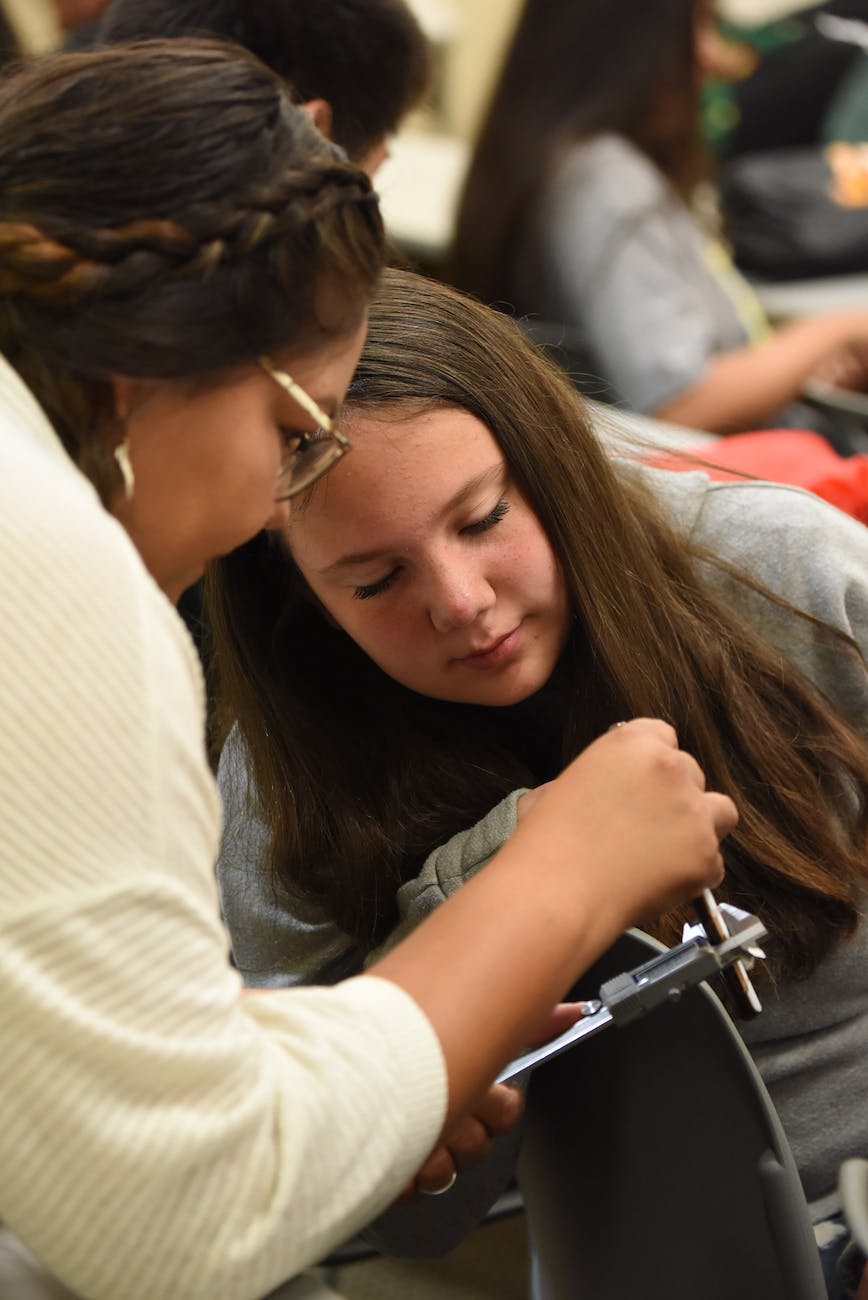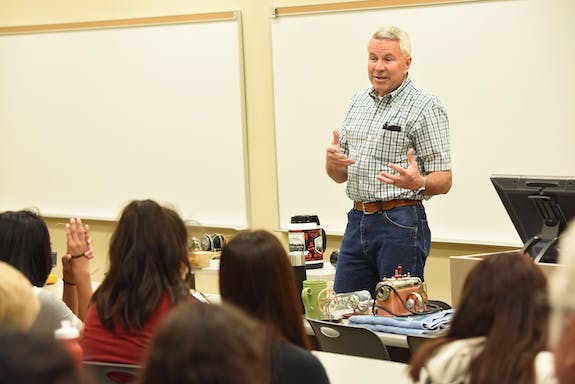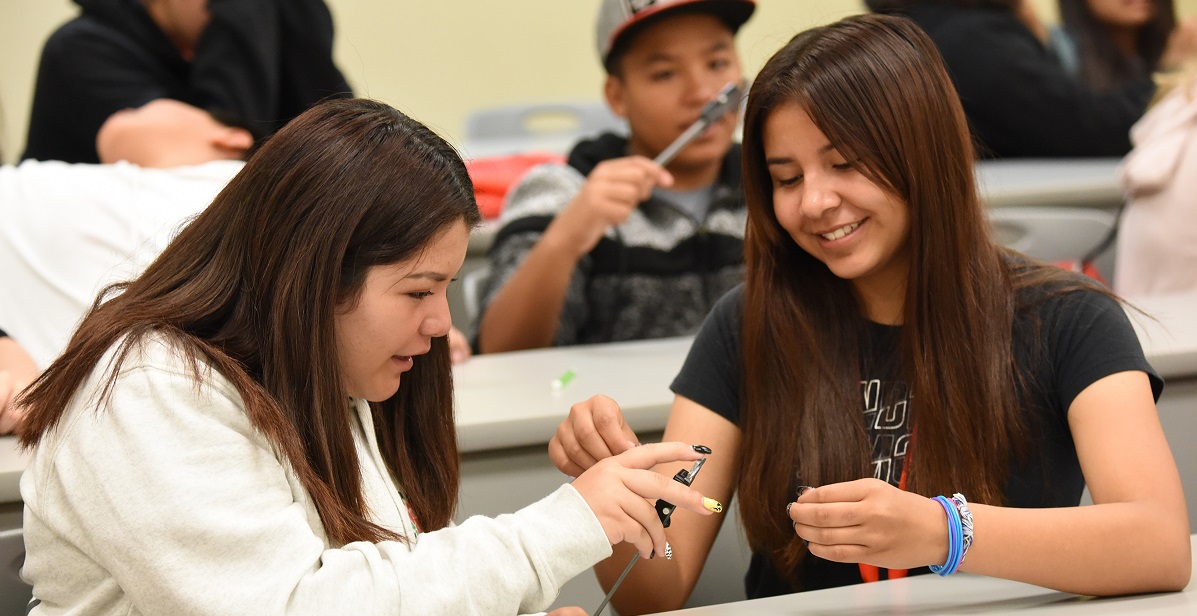Idaho National Laboratory played host in late July to nearly three dozen middle schoolers from Bingham and Bannock counties. Most of them were American Indian boys and girls accepted into a six-week STEM summer camp, the American Indian Services Pre-freshman Engineering Program (AIS PREP).
AIS PREP is a rigorous program, with homework due every day. Three absences will lead to dismissal. The bus that transports students from Fort Hall to Idaho State University leaves promptly at 8 a.m. every morning.
On the flip side, there are field trips, fun presentations and, best of all, snacks. One memorable snack, mini marshmallows flash frozen in liquid nitrogen, came courtesy of Michael Clark, an INL mechanical engineer who was one of four presenters during the INL week portion of the program from July 22 to 26.
Based in Salt Lake City, AIS is a nonprofit organization dedicated to providing educational opportunities to American Indians that will allow them to succeed and become leaders in their communities. AIS PREP, which started in 2013 at Utah Valley University, has evolved into a program in which students from grades seven through nine participate for three consecutive summers, taking classes that emphasize mathematics, logic and problem-solving.
The structure of the program – welcoming back the same students year after year – is crucial to its success, allowing educators to build on the knowledge the students gain not only during their typical school year learning, but also from prior years in PREP. Successful graduates of the program receive scholarships for their efforts and enter high school with a broad base of STEM knowledge under their belts, ready for the more complicated STEM work that their secondary education has in store.
By providing a substantial P3 Public-Private grant, administered through and matched in part by the state of Idaho’s STEM Action Center, as well as by offering significant volunteer support, INL was proud to participate in Idaho’s first ever AIS PREP program in 2019, which was held at Idaho State University. AIS PREP is one of many outreach programs that INL engages with throughout the state in support of its mission to bring STEM to all, with an emphasis on providing opportunities to rural and underserved populations. Collaborations between INL and American Indian tribal communities in the state, particularly the Shoshone-Bannock Tribes, are specifically designed to foster an interest among American Indian students in STEM activities and careers and help build that valuable pipeline of STEM talent for the lab.
Although this is the first year that the AIS PREP program has been held in Idaho, early indications of success are encouraging, and the program expects to graduate not only these students through the three-year course, but also welcome new classes for summers to come. Sunshine Shepherd, the program coordinator and a native of Fort Hall who is pursuing her master’s in public administration at Idaho State University, said she spent most of her spring recruiting in the schools and helping students with their applications. The program is free to all who qualify; to apply, students must write an essay explaining what they hope to learn from the program and provide their report cards and a teacher recommendation.

“I really wasn’t expecting it to be this much fun,” said River Denny, a student from Blackfoot Charter School. Denny said it was the scholarship promise that got her interested, but that she’s been really surprised by how much she has enjoyed the program itself. “I’ve made great friends and the teachers are really fun.”
Her favorite part? “The morning classes,” she said. Classes and presentations each morning are followed by independent and private tutoring opportunities in the afternoons, with curriculum-related field trips each Friday.
INL volunteers in the program included Clark, who kicked the week off on Monday morning. While learning about measurement, students used digital calipers to measure the width of hairs from their heads. Clark used a small sterling engine, which utilizes the heat from a cup of hot water to turn a wheel and explain net conversion to mechanical work – how machines are able to take one form of energy, like heat, and transform it into a different form, perhaps a useful mechanical movement that can help a machine work, such as the turning of a wheel or turbine.

“How many of you like explosions?” Clark asked. All hands went up. “Why do people like explosions? Because they feel that they are in control of energy. Did you know that there is available energy all around us, and that there are people who are paid to blow things up to learn how to control and use that energy? If you can get paid to do stuff that’s fun, how cool is that?”
Clark was followed a day later by INL tour guides Shelly Norman and Lara Hays, who gave a radiation demonstration and presentation. The next day, radiochemist Catherine Riddle talked in her own inimitable way about nuclear forensics and chemistry.
“It’s been pretty interesting,” said Yamni Chandler, an eighth grader at Hawthorne Middle School in Pocatello. “We learned how to make elephant toothpaste, how radiation is everywhere, what’s dangerous and what won’t affect you.”
At the end of the week, the students had the opportunity to come see INL facilities for themselves. According to Shepherd, the students were “super excited to ride on the charter bus to INL.”
The field trip on Friday first took the class to the INL manufacturing facility on Northgate Mile, then to the Energy Innovation Laboratory, where they heard about space batteries. After box lunches, presentations followed in the Human Systems Simulation Laboratory, then the Electric Vehicle Innovation Laboratory, the Biomass National User Facility, and the Computer Assisted Visual Environment (or CAVE) at the Center for Advanced Energy Studies.
Shepherd said she is hoping the second year of the AIS STEM program will include a trip to INL facilities on the desert. “I was super impressed,” she said. “I’d always wanted to go to INL, ever since I was young.”
Many of the students came away from INL week with a sense that they don’t have to go far if they want to explore careers in science and engineering. “I think it was a good eye-opener for them,” Shepherd said. “Overall, everything was just exactly what we wanted it to be.”
“INL is proud to have been a part of this summer’s AIS PREP,” said Jennifer Jackson, the lab’s K-12 Education Enrichment Program Manager. “It was truly a collaboration with the state, the universities, and the Shoshone-Bannock community. This initiative is incredibly value to our statewide community as well as to the students who participated. Idaho boasts a wealth of STEM career opportunities, and it is important to see students from all backgrounds come away from programs like these with a renewed interest in scientific pursuits.”





